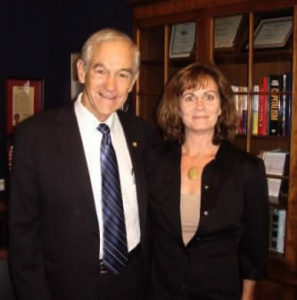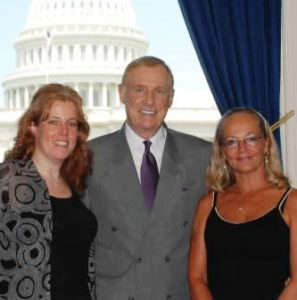New York Times
By: MILT FREUDENHEIM
Published: January 22, 2007
Drug advertising aimed at consumers, a fast-growing category that reached $4.5 billion last year, will face hard scrutiny in the new Congress, according to industry critics in both the House and Senate.
The consumer ads will be on the griddle early in this session at hearings on the user fees that manufacturers pay to speed the reviewing of new drugs by the Food and Drug Administration. The user fee law will die in the fall unless Congress acts to renew it.
The pharmaceutical industry, which often gets what it asks for from Congress and the executive branch, seeks to renew the law and add a new set of user fees that would be pay salaries for additional F.D.A. employees to evaluate all consumer drug ads, before they are shown on television. Both the industry and its critics agree that there should be a pause before the advertising starts — to allow time for doctors to learn about a new drug.
The companies want the delay to be left up to them, but critics say the F.D.A. should require a wait of up to two years. Criticism of direct-to-consumer advertising has intensified since 2004, after Merck withdrew Vioxx, a heavily advertised painkiller, after a clinical trial showed that it sharply increased the risk of heart attacks and strokes.
“From the beginning , everyone, including the company, agreed that not everybody ought to be getting Vioxx,” said Helen Darling, president of the National Business Group on Health, an organization of large employers. “But the ads implied there was a widespread need for it.”
Spending on consumer drug advertising, meanwhile, has been growing robustly, from $1.1 billion in 1997 to $4.2 billion in 2005, according to a recent report to Congress by the Government Accountability Office . In the first nine months of 2006, spending rose 8.4 percent to $3.29 billion, on track toward $4.5 billion for the year, according to TNS Media Intelligence, an advertising research firm.
Spending on the ads faltered in 2005 after soaring 27 percent in 2004, before Vioxx was withdrawn, said David Kweskin, a senior executive at the firm. “Now they are in a catch-up phase.”
Two independent government watchdog groups sharply criticized consumer drug advertising recently, and a separate survey Jan. 9 commissioned by the PricewaterhouseCoopers accounting and consulting firm indicated that skepticism is widespread among the public, too. Only 1 in 10 consumers said the direct-to-consumer, or D.T.C., ads could provide useful information to a large audience, the survey said. (Consumer drug advertising is not permitted in most of the world, except New Zealand and the United States.)
The pharmaceutical industry itself acknowledges having an image problem.
“It would be naïve to not acknowledge the fact that D.T.C. advertising is also a lightening-rod in the health care debate in this country,” said Billy Tauzin, the former congressman who is now president and chief executive of the Pharmaceutical Research and Manufacturers of America, in a speech to venture capitalists last spring. There is “one great problem” that the manufacturers face, he said: “in a word, it is trust.”
“While individual patients find the information useful in discussions with their physicians,” he added in his speech, “patients, physicians and consumers generally express unhappiness with D.T.C. advertising.”
Mr. Tauzin’s organization issued voluntary guidelines for consumer ads, which took effect last year. Under the guidelines, the companies have promised to hold off on consumer advertising of a new medicine for an unspecified “appropriate” period. That would allow time to tell doctors about risks and benefits, before television and Web site viewers see an ad and demand a prescription.
Twenty-seven members of the pharmaceutical manufacturers organization have endorsed the guidelines, but it is hard to figure exactly how long the delays in advertising will run. Bristol-Myers Squibb has said that it would delay for 12 months. Johnson & Johnson and Pfizer said they would wait six months. The manufacturers group cannot say how other companies have interpreted the guidelines, a spokesman said.
But according to TNS Media Intelligence, the companies have actually been waiting 15 months, on average, since the Vioxx debacle. Critics say that even after F.D.A. approval, the full safety profile of a new drug cannot be known until it has been widely used for a number of years.
But the manufacturers’ guidelines have to be voluntary, said Daniel E. Troy, a former chief counsel of the F.D.A., because the Supreme Court has “struck down restrictions on advertising of tobacco, alcohol, gambling and unapproved compounded drugs.”
The agency sent 15 warning letters to drug companies regarding ads in 2005 and a total of 22 complaints last year.
The F.D.A. told AstraZeneca, for example, to “immediately cease” a “misleading superiority claim” in a 2005 TV commercial. The ad said AstraZeneca’s Crestor was “clearly the best” in a “head to head” test with the three largest-selling cholesterol drugs.
Emily Y. Denney, an AstraZeneca spokeswoman, said that by the time the letter was received, in March 2005, the ads were no longer running. The company defended its message in the advertising as “appropriate.”
Another F.D.A. letter told Amgen, a biotechnology company, to stop running commercials for Enbrel, a treatment for the skin disease psoriasis, that the F.D.A. said minimized “serious risks” associated with the drug. Amgen immediately withdrew the commercial.
Last year, the company obtained F.D.A. approval of the contents of a new Enbrel television ad before showing it, David Polk, an Amgen spokesman said. Corporate lawyers say such advertising is protected by the First Amendment under a doctrine of commercial free speech. But some experts say the limits of the protection are murky.
The closest approach to clarity was in 2002 when the Supreme Court rejected, by a 5-to-4 vote, a federal restriction on advertising by pharmacists who make their own compounds.
“It is a giant game of chicken between the government and the industry,” said R. Alta Charo, a law professor and bioethics specialist at the University of Wisconsin in Madison. “I don’t believe either side really wants to see a definitive case go to the Supreme Court because neither side is willing to take the risk that they will lose.”
Professor Charo was a member of a committee of experts of the Institute of Medicine, which examined drug safety issues at the request of the F.D.A. Last fall, the committee called on Congress to give the F.D.A. new authority over advertising, including the power to require a two-year moratorium on advertising before approving a new drug.
“I think the Congress has clearly indicated its strong interest and concerns about the F.D.A. and drug safety for consumers,” said Sheila P. Burke, a longtime Republican health policy expert who headed the Institute of Medicine committee. “Broad-scale advertising can sometimes lead to a rapid increase in the use of a drug” that raises the risk of harm for patients, she said.
F.D.A. regulators would be granted the power to require moratoriums under a bill sponsored by Senators Edward M. Kennedy and Michael B. Enzi, the chairman and ranking Republican member of the Senate Health, Labor, Education and Pensions Committee.
“Patients deserve the best and most accurate information about the medicines they take,” Senator Kennedy said in a statement. “An essential part of any drug safety proposal must be to give the F.D.A. the authority and resources it needs to oversee direct-to-consumer advertising, and to allow the F.D.A. to impose conditions or limits on that advertising, where needed to protect the public health.”
Testifying for the pharmaceutical industry last year, Dr. Adrian Thomas, a vice president of Johnson & Johnson, insisted that “the important First Amendment issues that arise from banning truthful speech, even for a period of time, must be carefully considered before legislating in this area.”
The Government Accountability Office said last November that the F.D.A. should be doing a better job of overseeing consumer drug ads. Now, the F.D.A. reviews only a small fraction of the advertising, picking and choosing without proper priorities, the G.A.O. said.
The G.A.O. report had been requested by three influential senators: Bill Frist, a doctor, before he stepped down as Republican leader of the Senate; Charles E. Grassley , now the ranking Republican on the finance committee, and Herb Kohl, a Democrat who heads an appropriations subcommittee that oversees the F.D.A.
Representative Henry A. Waxman, a California Democrat who is chairman of the House Oversight and Reform Committee, added a further criticism: that the F.D.A. had been slow to crack down on drug ads that included “false and misleading” claims, he said in a telephone interview.
F.D.A. officials said they had to deal with 54,000 drug promotions each year, aimed at both doctors and consumers.
* “We are seriously considering all of the recommendations” of the Institute of Medicine report, said Thomas Abrams, director of the F.D.A.’s division of drug marketing, advertising and communications.
Copyright 2007 The New York Times Company
FAIR USE NOTICE: This may contain copyrighted (© ) material the use of which has not always been specifically authorized by the copyright owner. Such material is made available for educational purposes, to advance understanding of human rights, democracy, scientific, moral, ethical, and social justice issues, etc. It is believed that this constitutes a ‘fair use’ of any such copyrighted material as provided for in Title 17 U.S.C. section 107 of the US Copyright Law. This material is distributed without profit.






 For the past three years, the controversy over antidepressants has largely centered on exploring links between the pills and suicidal behavior, particularly in youngsters. But there has also been considerable chatter about homicidal thoughts.
For the past three years, the controversy over antidepressants has largely centered on exploring links between the pills and suicidal behavior, particularly in youngsters. But there has also been considerable chatter about homicidal thoughts.